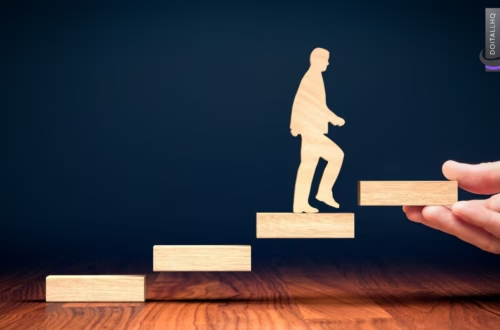How to Bounce Back Stronger – A Complete Guide
Failure is not the end—it’s the beginning of a stronger comeback. Discover how top entrepreneurs, athletes, and innovators turned setbacks into success. Learn actionable strategies, explore real-life case studies, and use powerful journal prompts to build resilience and achieve your goals.
Table of Contents
- Introduction: Why Failure is Not the End
- The Psychology of Failure & Success
- Growth Mindset vs. Fixed Mindset
- The Role of Resilience
- Case Studies: Famous Failures That Led to Success
- Steve Jobs: Fired from Apple, Then Built a Legacy
- J.K. Rowling: From Rejection to Harry Potter
- Michael Jordan: Cut from His High School Team
- Oprah Winfrey: Fired Before Becoming a Media Mogul
- Elon Musk: SpaceX and Tesla’s Near-Bankruptcy Moments
- How to Bounce Back Stronger: 7 Proven Strategies
- Reframe Your Perspective
- Analyze & Learn from Mistakes
- Build a Support System
- Set Small, Achievable Goals
- Develop Mental Toughness
- Take Calculated Risks
- Keep Moving Forward (The “One More Step” Rule)
- Journal Prompts for Overcoming Failure
- Reflection Prompts
- Growth & Strategy Prompts
- Motivational Prompts
- Conclusion: Your Failure is Your Fuel
1. Introduction: Why Failure is Not the End
Failure is often seen as a roadblock, but history’s most successful people prove it’s a stepping stone. Thomas Edison failed 1,000 times before inventing the light bulb. Walt Disney was fired for “lacking imagination.” What separates those who succeed from those who quit? Mindset, resilience, and strategy.
This guide will show you how to turn failure into fuel, featuring real-life case studies, psychological insights, and journal prompts to help you bounce back stronger.
2. The Psychology of Failure & Success
Growth Mindset vs. Fixed Mindset
- Fixed Mindset: Believes talent is innate; failure means “I’m not good enough.”
- Growth Mindset: Sees failure as feedback; skills can be developed.
Example: Students with a growth mindset outperform fixed-mindset peers because they embrace challenges.
The Role of Resilience
Resilience is the ability to recover from setbacks. Studies show resilient people:
- View failure as temporary
- Focus on solutions, not blame
- Use setbacks as learning experiences
3. Case Studies: Famous Failures That Led to Success
Case Study 1: Steve Jobs – Fired from Apple, Then Built a Legacy
- Failure: Ousted from Apple in 1985.
- Comeback: Founded NeXT and Pixar, then returned to Apple to launch the iPhone.
- Lesson: “Getting fired was the best thing that could have ever happened to me.”
Case Study 2: J.K. Rowling – Rejected 12 Times Before Harry Potter
- Failure: Living on welfare, rejected by publishers.
- Comeback: Persisted; Harry Potter became a global phenomenon.
- Lesson: “Rock bottom became the solid foundation on which I rebuilt my life.”
Case Study 3: Michael Jordan – Cut from His High School Team
- Failure: Told he wasn’t good enough.
- Comeback: Became the greatest basketball player ever.
- Lesson: “I’ve failed over and over. That’s why I succeed.”
Case Study 4: Oprah Winfrey – Fired from Her First TV Job
- Failure: Deemed “unfit for television.”
- Comeback: Built a media empire.
- Lesson: “Turn your wounds into wisdom.”
Case Study 5: Elon Musk – SpaceX’s Early Failures & Tesla’s Near-Bankruptcy
- Failure: Three SpaceX rockets exploded; Tesla almost went bankrupt in 2008.
- Comeback: SpaceX now dominates space travel; Tesla revolutionized EVs.
- Lesson: “If things are not failing, you are not innovating enough.”
4. How to Bounce Back Stronger: 7 Proven Strategies
1. Reframe Your Perspective
- Ask: “What did I learn?” instead of “Why did I fail?”
2. Analyze & Learn from Mistakes
- Conduct a “failure post-mortem”: What went wrong? How can you improve?
3. Build a Support System
- Surround yourself with mentors and motivators.
4. Set Small, Achievable Goals
- Small wins rebuild confidence.
5. Develop Mental Toughness
- Practice resilience through challenges (e.g., cold showers, tough workouts).
6. Take Calculated Risks
- Failure is data—use it to make smarter moves.
7. Keep Moving Forward (The “One More Step” Rule)
- When you want to quit, take one more step.
5. Journal Prompts for Overcoming Failure
Reflection Prompts
- What did this failure teach me?
- What would I do differently next time?
Growth & Strategy Prompts
- What’s one small step I can take today toward my goal?
- Who can I ask for help or advice?
Motivational Prompts
- What’s my “why”? Why must I keep going?
- How will future me thank present me for not giving up?
6. Conclusion: Your Failure is Your Fuel
Every great success story includes chapters of failure. The difference between those who succeed and those who don’t? Persistence, learning, and resilience.
Action Step: Pick one journal prompt and write your thoughts now. Then, take one small step toward your goal today.






